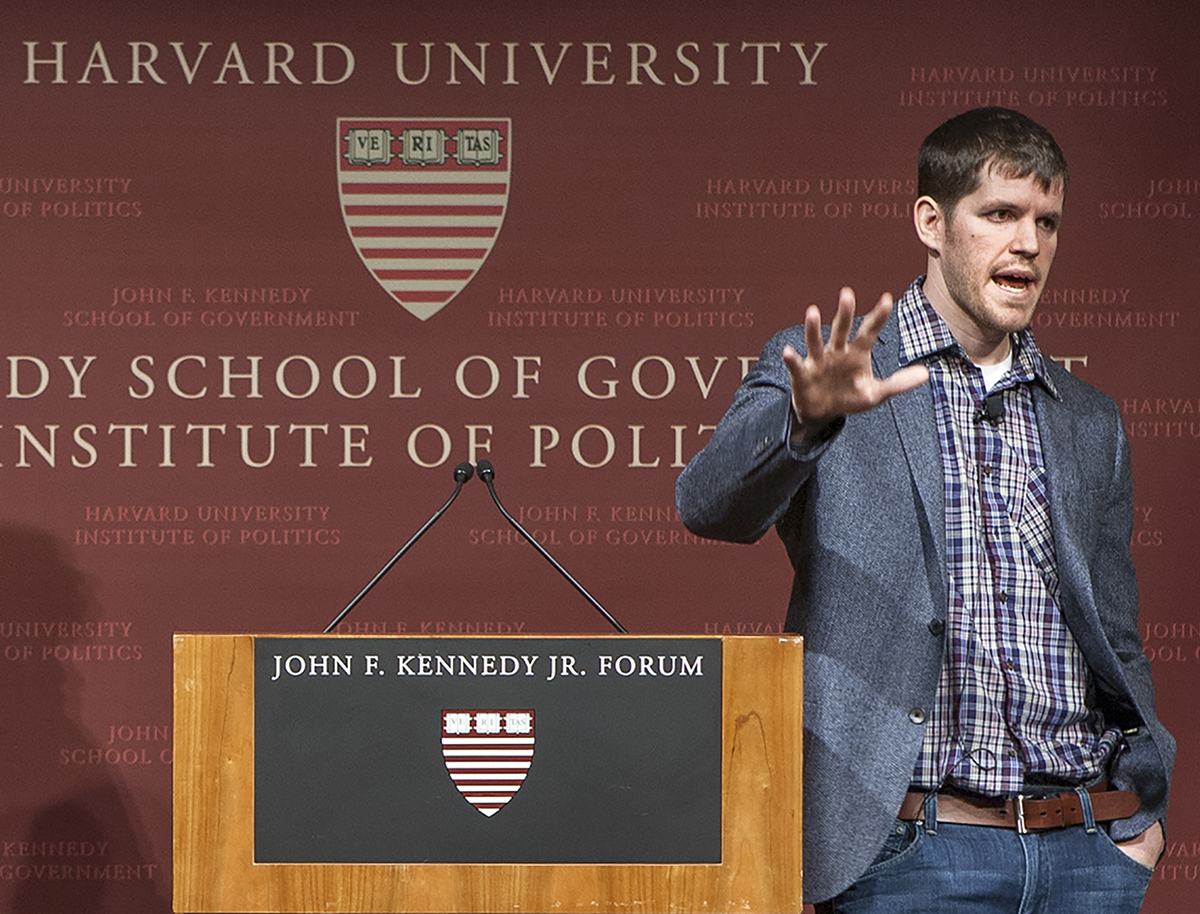‘Humans of New York’ Goes to Harvard

Photo by Olga Khvan
Humans of New York creator Brandon Stanton took six years to graduate from the University of Georgia, got fired from a bond trading position in Chicago, and self-identifies as a “horrible photographer.”
But despite all of this, Stanton’s project, a “photographic census” of New York City started in 2010, now boasts more than 12 million followers on Facebook, and throughout the past few months, Stanton has been able to take Humans of New York on a 50-day, 10-country trip sponsored by the United Nations, to the top of the New York Times nonfiction bestseller list, and, just last week, to the Oval Office.
“One of the amazing things that I think about Humans of New York is that I didn’t have a Harvard degree. I lost my job, I didn’t have photography experience, but I was willing to work hard,” Stanton said during his appearance at a John F. Kennedy Jr. Forum hosted by Harvard’s Institute of Politics on Wednesday night. “I’m a horrible photographer. I’m almost proud of it because it shows what anyone’s capable of doing—that there’s power in the concept, power in the idea.”
Stanton’s appearance at the forum, a tribute to JFK that serves as the university’s premier arena for political speech, discussion, and debate, came just a few weeks after he began raising money to send kids from the Mott Hall Bridges Academy, located in a crime-ridden neighborhood of Brooklyn, on annual trips to Harvard.
I’m a horrible photographer. I’m almost proud of it because it shows what anyone’s capable of doing—that there’s power in the concept, power in the idea.
Last month, while he was out and about photographing for his blog, Stanton met Vidal Chastanet, a 13-year-old student from MHBA, which then prompted a meeting with principal Nadia Lopez, whom Chastanet has named as the most influential person in his life. After brainstorming with Lopez, Stanton began an Indiegogo campaign, which closed two days ago and raised more than $1.4 million that will fund Harvard trips, summer programming, and scholarships for MHBA students. Last week, Stanton, Chastanet, and Lopez made a trip to the White House to meet President Obama, who had been inspired by their story.
Stanton plans to return to Harvard soon, this time with Lopez and her MHBA students in tow. But standing in front of the audience at the forum on Wednesday night, many of them freshmen at the university, Stanton warned them not to rely solely on the prestige of their education.
“I would say that the Harvard degree that you’re going to get will be less valuable than it ever has been before. The playing field is being leveled to put the tools and power in the hands of people that would never have achieved this success before,” he said. “However, the work ethic and the smarts that you guys had that got you into this school will be more valuable than ever because you will now have the tools to shape your lives to where you don’t have to worry about going to cocktail parties and meeting the important people or making the right connections and getting venture capital funding.”
Stanton outlined the progression of Humans of New York from a personal project to a cultural phenomenon, highlighting not only the highs, but also the lows along the way. Early on in the blog’s life, for example, Stanton had photographed a Sudanese woman and a Hassidic Jewish man standing together on a subway platform, attracted by a visual that encapsulated the diversity of New York City. Afterward, the man had leaned in and whispered in the woman’s ear, prompting an angry response. The man had hurried away, and the woman told Stanton that he had tried to proposition her with money. With the woman’s encouragement, Stanton posted the photograph and the accompanying story on his blog, sending out what he thought was a positive social message against harassment.
But later that night, Stanton received an email informing him that the man in the photograph had been shamed from his community, and that his son had tried to kill himself. Things only got worse when he tried to take the photo down, which spurred negative commentary from the feminist community. All in all, it was a learning experience.
“From that moment I realized that I, with the power that I have and the amount of people following me, could not try somebody on my blog,” Stanton said. “I could not accuse somebody of a crime without knowing all the facts and then just throw it to 12 million people.”
Instead, Stanton honed in on what now makes the project resonate so well with people—offering glimpses into strangers’ lives.
“I take each person, and I always say, ‘I want a story from this person that I haven’t heard from anybody else,'” he said. “My goal in all of this is a moment of authenticity.”


